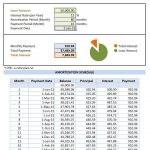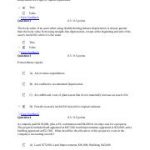Compound Interest Calculator

Start by entering your initial deposit or investment, or your current balance if you already have a deposit. Then enter how long you want to keep the deposit or investment, usually in years, but we also support other time periods. The following chart demonstrates the difference that the number of compounding periods can make for a $10,000 investment with an annual 7% interest rate over a 10-year period.
Compound Interest Formula
Our estimates are based on past market performance, and past performance is not a guarantee of future performance. Obviously, this is only a basic example of a compound interest table. In fact, they are usually much, much larger, as they contain more periods ttt various interest rates rrr and different compounding frequencies mmm…
We and our partners process data to provide:
The long-term effect of compound interest on savings and investments is indeed powerful. Because it grows your money much faster than simple interest, compound interest is a central factor in increasing wealth. The following table demonstrates the difference that the number of compounding periods can make for a $10,000 loan with an annual 10% interest rate over a 10-year period. Compound interest (or compounding interest) is interest calculated on the initial principal, which also includes all the accumulated interest of previous periods of a deposit. Here’s how different compounding period intervals are affecting the total amount generated and interest earned. This is because rate at which compound interest grows depends on the compounding frequency, such that the higher the compounding frequency, the greater the compound interest.
How does the compound interest rate calculator work?
Note that in the case where you make a deposit into a bank (e.g., put money in your savings account), you have, from a financial perspective, lent money to the bank. If you include regular deposits or withdrawals in your calculation, we switch to provide you with a Time-Weighted Return (TWR) figure. Banks benefit from compound interest lending money and reinvesting interest received into additional loans. Depositors benefit from compound interest receiving interest on their bank accounts, bonds, or other investments.
- When it comes to retirement planning, there are only 4 paths you can choose.
- For savings and investments, compound interest is your friend, as it multiplies your money at an accelerated rate.
- The Compound Interest Calculator below can be used to compare or convert the interest rates of different compounding periods.
- If you want to make $5,000 in interest over the next 5 years, this calculation will tell you how much you need to invest.
- We’ll assume you intend to leave the investment untouched for 20 years.
- This tool enables you to check how much time you need to double your investment even quicker than the compound interest rate calculator.
Calculate compound interest step by step
The most common real-life application of the compound interest formula is a regular savings calculation. The Rule of 72 is a simpler way to determine how long it’ll take for a specific amount of money to double, given a fixed return rate of return that is compounded annually. It can be used for any investment, as long as there is a fixed rate that involves compound interest. Simply divide the number 72 by the annual rate of return and the result of this is how many years it’ll take.
Excel: Calculate Compound Interest in Spreadsheets

In our article about the compound interest formula, we go through the process ofhow to use the formula step-by-step, and give some real-world examples of how to use it. The second way to calculate compound interest is to use a fixed formula. The first way to calculate compound interest is to multiply each year’s new balance by the interest rate. Compound interest isn’t just interest – it’s interest on interest! Your money grows faster, works harder, and creates a financial snowball effect. N is the number of times that interest is compounded per unit t (usually, n is the number of times per year).
The rule of 72 helps you estimate the number of years it will take to double your money. The method issimple – just divide the number 72 by your annual interest rate. The TWR figure represents the cumulative growth rate of your investment. It is calculated by breaking https://www.wave-accounting.net/ out each period’s growth individually to remove the effects of any additional deposits and withdrawals. Suppose you deposit $1,000 into a savings account with a 5% interest rate that compounds annually, and you want to calculate the balance in five years.
NerdWallet, Inc. is an independent publisher and comparison service, not an investment advisor. Its articles, interactive tools and other content are provided to you for free, as self-help tools and for informational purposes only. NerdWallet does not and how to fill in federal grant application forms cannot guarantee the accuracy or applicability of any information in regard to your individual circumstances. Examples are hypothetical, and we encourage you to seek personalized advice from qualified professionals regarding specific investment issues.
Use the tables below to copy and paste compound interest formulas you need to make these calculations in a spreadsheet such as Microsoft Excel, Google Sheets and Apple Numbers. The compound interest calculator lets you see how your money can grow using interest compounding. Simple interest is calculated only on the principal amount of an investment. The same logic applies to opening an individual retirement account (IRA) and taking advantage of an employer-sponsored retirement account, such as a 401(k) or 403(b) plan. Start early and be consistent with your payments to get the maximum power of compounding.

When the returns you earn are invested in the market, those returns compound over time in the same way that interest compounds. When you invest in the stock market, you don’t earn a set interest rate, but rather a return based on the change in the value of your investment. Compound interest is the interest you earn on your original money and on the interest https://www.quickbooks-payroll.org/top-10-business-blogs-and-why-they-are-successful/ that keeps accumulating. With your new knowledge of how the world of financial calculations looked before Omni Calculator, do you enjoy our tool? If you want to be financially smart, you can also try our other finance calculators. Within our compound interest calculator results section, you will see either a RoR or TWR figure appear for your calculation.
The basic rule is that the higher the number of compounding periods, the greater the amount of compound interest. You decide that you want to invest all of the money in a savings account. The final value after 5 years is $11,041 whereas with simple interest it would have been just $11,000. This might not seem like much, but if the rate of return is higher or the period over which compounding occurs is longer, the compounding effect can be dramatic. Therefore, the more often the interest is added to (capitalized on) the principal amount, the faster your balance grows.
Below you can find information on how the compound interest calculator works, what user input it accepts and how to interpret the results and future value growth chart. The compounding of interest grows your investment without any further deposits, although you may certainly choose to make more deposits over time – increasing efficacy of compound interest. Having a good understanding of how compound interest works can significantly improve your effectiveness in financial planning. This compound interest calculator can help you set goals and ensure you are on the right track.
This compound interest calculator is a tool to help you estimate how much money you will earn on your deposit. In order to make smart financial decisions, you need to be able to foresee the final result. That’s why it’s worth knowing how to calculate compound interest.
In the second example, we calculate the future value of an initial investment in which interest is compounded monthly. We’ve discussed what compound interest is and how it is calculated. So, let’s now break down interest compounding by year,using a more realistic example scenario. We’ll say you have $10,000 in a savings account earning 5% interest per year, withannual compounding.

